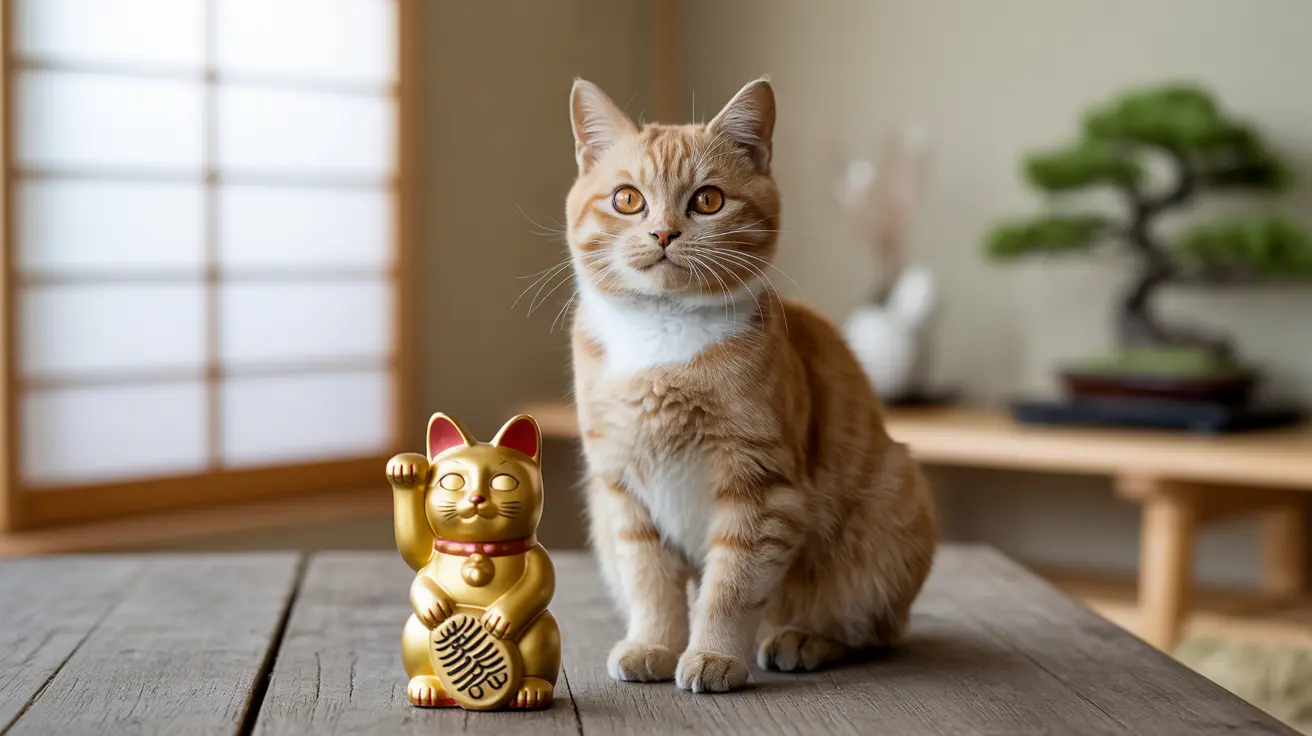Introduction
The lucky cat, known in Japanese as Maneki Neko, stands as one of the most recognizable symbols of good fortune in Asian culture. These charming cat figurines, with their raised paws and welcoming expressions, have become global icons of prosperity and protection. Understanding the lucky cat meaning reveals a rich tapestry of cultural significance, historical legends, and enduring traditions that continue to resonate with people worldwide.
Whether you've spotted these beckoning felines in your local Asian restaurant or are considering adding one to your home or business, discovering the deeper symbolism and proper placement of these fortune-bringing figurines can help you maximize their traditional benefits.
The Historical Origins of Maneki Neko
The Maneki Neko's story begins in Japan's Edo period (1603-1868), with several fascinating origin legends. The most famous tale centers around Tokyo's Gotokuji Temple, where a cat supposedly saved a feudal lord from a lightning strike by beckoning him to safety. This miraculous event led to the temple's prosperity and the creation of the first lucky cat statue.
Another compelling legend tells of a courtesan named Usugumo and her beloved cat, who saved her life by alerting her to a poisonous snake. These stories reflect the deep connection between cats and good fortune in Japanese culture.
Understanding Lucky Cat Gestures and Positions
The raised paw of the Maneki Neko carries specific meaning depending on which one is lifted. A left paw raised attracts customers and people, making it perfect for businesses like restaurants. A right paw raised beckons wealth and financial prosperity, ideal for offices and shops.
The height of the raised paw is also significant - the higher the paw, the farther the cat can attract good fortune from. However, some traditions caution against displaying cats with both paws raised very high, considering it potentially "greedy."
The Significance of Colors and Accessories
Each lucky cat color carries unique symbolic meaning:
- Calico (Mi-ke): Traditional and considered the luckiest
- White: Purity and positive energy
- Gold: Wealth and prosperity
- Black: Protection from evil
- Red: Success in love and health
- Green: Academic achievement
Traditional accessories like the koban coin and decorative bib enhance the cat's fortune-bringing powers. The coin typically displays the inscription "sen man ryou" (ten million gold pieces), representing abundant wealth.
Proper Placement for Maximum Fortune
To maximize the lucky cat's benefits, placement is crucial. In businesses, position your Maneki Neko near the entrance or cash register. For homes, the most auspicious locations include:
- Near the front door to welcome good fortune
- In the wealth corner (southeast) of your space
- On business desks facing the door
- In living areas where family gathers
Ensure your lucky cat faces into the space rather than toward a wall or window to direct fortune inward.
Modern Applications and Global Appeal
Today's Maneki Neko has evolved beyond traditional ceramic figurines to include modern variations like electronic waving cats, designer collectibles, and even digital representations. Their appeal has spread globally, making them popular gifts for business openings, home blessings, and general good luck wishes.
Frequently Asked Questions
What does the raised paw on a lucky cat (Maneki Neko) symbolize?
The raised paw's meaning depends on which one is lifted. The left paw attracts customers and people, while the right paw beckons wealth and prosperity. The higher the paw is raised, the farther its lucky influence can reach.
How do different colors of Maneki Neko affect the type of luck or protection they bring?
Each color brings specific benefits: calico is traditionally luckiest, white represents purity, gold attracts wealth, black offers protection, red brings health and love, and green supports academic success.
Where should I place a lucky cat figurine to attract the most good fortune?
Place your lucky cat near entrances, cash registers, or in the southeast (wealth) corner of your space. Ensure it faces into the room to direct fortune toward the space's occupants.
What is the historical origin story behind the Maneki Neko lucky cat?
The most famous origin story involves a cat at Gotokuji Temple saving a feudal lord from lightning by beckoning him to safety. This led to the temple's prosperity and the creation of the first lucky cat statue.
Can I use a lucky cat at home, or are they only for businesses and shops?
Lucky cats are appropriate for both business and home use. In homes, they can bring general good fortune, protect against negative energy, and attract specific types of luck based on their color and position.
Conclusion
The lucky cat's enduring popularity speaks to its powerful symbolism and the universal human desire for good fortune. Whether you choose one for its traditional meaning or aesthetic appeal, understanding the lucky cat meaning can help you select and position your Maneki Neko for maximum benefit. As these beloved figures continue to bridge Eastern and Western cultures, they remain powerful symbols of hope, prosperity, and protection for millions worldwide.






